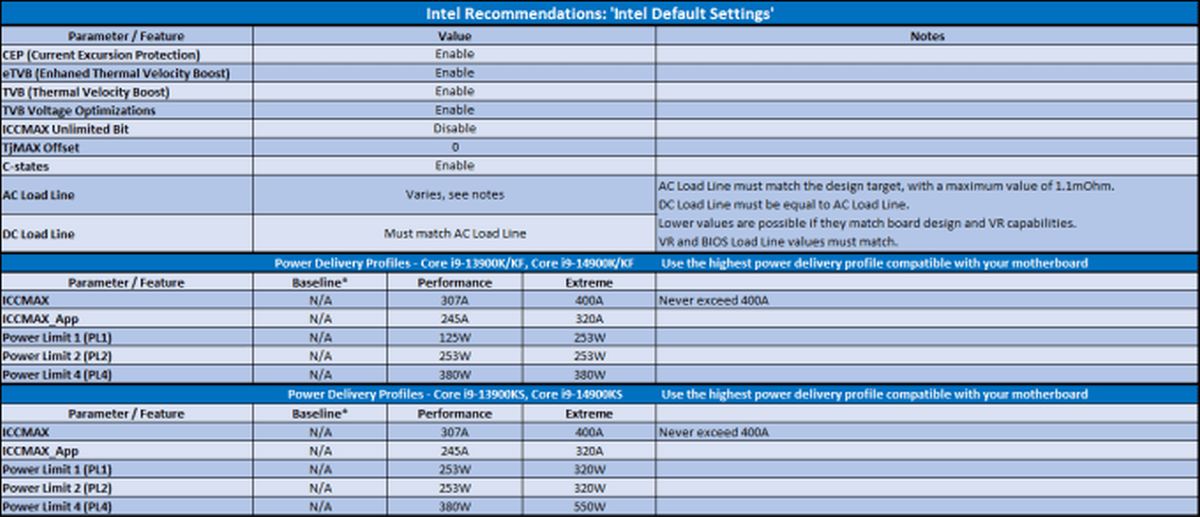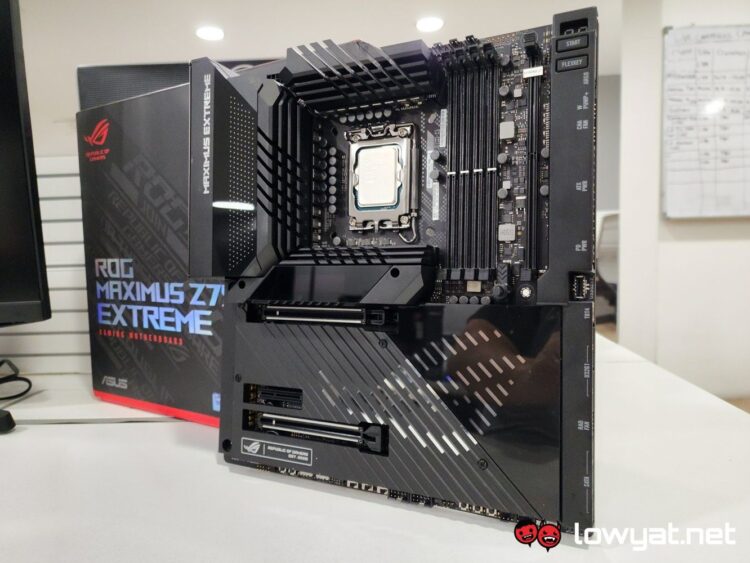Intel recently released a new statement regarding the instability issues over its 13th and 14th Gen Core i9 CPUs. This time, the statement addresses the consumers directly, and not motherboard makers.
Several motherboard manufacturers have released BIOS profiles labeled ‘Intel Baseline Profile’. However, these BIOS profiles are not the same as the ‘Intel Default Settings’ recommendations that Intel has recently shared with its partners regarding the instability issues reported on 13th and 14th gen K SKU processors.
These ‘Intel Baseline Profile’ BIOS settings appear to be based on power delivery guidance previously provided by Intel to manufacturers describing the various power delivery options for 13th and 14th Generation K SKU processors based on motherboard capabilities.
Intel is not recommending motherboard manufacturers to use ‘baseline’ power delivery settings on boards capable of higher values.
Intel’s recommended ‘Intel Default Settings’ are a combination of thermal and power delivery features along with a selection of possible power delivery profiles based on motherboard capabilities.
Intel recommends customers to implement the highest power delivery profile compatible with each individual motherboard design as noted in the table below:

As a quick primer, the issue of Intel’s Core i9-13900K and 14900K CPUs first came to light back last month, when it was reported that many South Korean PC gamers were returning their top-tier CPUs in droves, due to an instability issue that cropped up while playing the fighting game, Tekken 8.
Intel launched an investigation into the matter and suspected that it was the fault of motherboard makers, many of which it suspected of altering or adulterating their respective boards, outside the chipmaker’s guidelines. One such suspicion was that said makers were increasing the PL1 and PL2 – those are the power limits – beyond the Intel’s recommended limits.
(Source: HardwareLuxx)
Follow us on Instagram, Facebook, Twitter or Telegram for more updates and breaking news.



